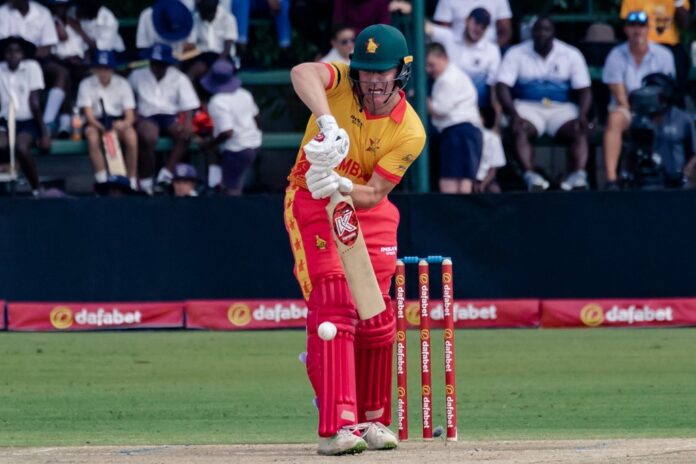On Feb. 4, 2023, Gary Ballance stepped out at Bulawayo, Zimbabwe, to represent his country of birth for the first time in a Test match at the age of 33. Although there are some 70 others who have made their debuts at an older age, Balance’s story carries a difference.
He had already played Test cricket for another country, England, on 23 occasions. This makes him the 16th male cricketer to play for more than one country in the 146 years of Test match history.
Given that there have been upwards of 3,140 players who have participated in Test matches since the first one in 1877, this is a minute percentage. Only four of the 16 have occurred in the last 50 years. Prior to Ballance, the most recent was Boyd Rankin, who was born in Northern Ireland and played twice for England against Australia in 2014-15.
Beset by injuries, his opportunities for further appearances were limited and he was selected to play in Ireland’s first-ever Test in 2019 against England. This was after Ireland, representing the whole of the island, became a full ICC member.
Political circumstances disrupted the careers of South African cricketers between 1971 and 1994. John Traicos played once in 1970 against Australia. In 1991, he played for Zimbabwe at the age of 45. The gap between his two appearances is the longest in Test history. Kepler Wessels settled in Australia and qualified to appear in 24 Tests for them between 1982 and 1985. He retired in 1986 and returned to South Africa. After the country’s readmittance to international cricket in 1991, Wessels played 16 Tests between 1992 and 1994, captaining in each one, before a second retirement from Test cricket.
One player has represented both India and England, Aftikar Ali Khan Pataudi. Although he scored a century in the first Test of the controversial 1932-33 body-line series in Australia, his disapproval of the England captain’s tactics led to him being left out of the final three Tests. After declining two invitations to captain India, he finally did so in 1946 at Lords.
The creation of Pakistan by India’s partition in 1947 led to circumstances in which three players represented both countries. The first, Abdul Kardar, played in India’s first Test match at Lords in 1946. He captained Pakistan in its first Test against India in 1952, playing another 22 times until 1958. Gul Mohammad played eight times for India in 1946 and 1952. In 1955, he took Pakistani citizenship and played one Test against Australia in 1956-57. Amir Elani played once for India against Australia in 1947 and five times for Pakistan in 1952-53.
After playing in five Tests against Australia and New Zealand for the West Indies in 1951-52, Sammy Guillen emigrated to New Zealand, which selected him to play three Tests, against the West Indies. All of the other dual representations occurred between 1887 and 1910. During those years, there were no hard and fast regulations concerning registration.
Billy Midwinter was born in England in 1851, his family emigrating to Australia in 1860. He played in the inaugural test between Australia and England in 1887. He then resettled in England, playing four times against Australia, before returning to Australia for whom he played another six times, until 1887. Sadly, his subsequent personal life was tragic. Midwinter’s wife and two of his children died and he, with ailing businesses, went into an asylum, where he died, aged 39.
Switching between Australia and England was also undertaken by four other Australians of the era.
Billy Murdoch, regarded as Australia’s finest batsman between 1880 and 1884, made four tours to England, the last in 1890 after which he settled in Sussex and played for that county. In 1892, he was selected to join England’s tour of South Africa, playing in one Test. This match also witnessed the appearance of another Australian, J. J. Ferris, in English colors. He had toured England with Murdoch in 1890 and chose to settle there.
Sammy Woods, born in Australia, but schooled in England from the age of 16, developed into a fine all-round sportsman. In 1888, the visiting Australian team suffered injuries and called up Woods, who played in all three Tests. He did not play again for Australia, making his life in England for which he played three Tests against South Africa in 1896 and captained Somerset for 12 years.
Albert Trott made a sensational debut for Australia against England in 1895, averaging 102.5 with the bat. This, coupled with bowling skills, were insufficient to gain selection for the tour of England in 1896. Undeterred, Trott travelled on the same ship as the Australians, to start a fresh life in England, where he played with great success for Middlesex. At the peak of his powers, Trott was selected for England’s tour of South Africa in 1899.
During the same era, two Englishmen also played for South Africa. In 1888-89, Frank Hearne played for England in South Africa to whence he emigrated for health reasons, representing the country in 1892 against England. Frank Mitchell played for England against South Africa in 1898-99, returning there during the Boer War and afterwards as a player and captain in state cricket. His success led to him being named as captain of a South African team which played against England in 1904. South African teams were not strong when these two played against them and the matches were awarded Test status retrospectively.
It can be seen that unique sets of circumstances, either personal or political, or a combination of the two, explain these dual representations. In Ballance’s case, a new dimension was added. He admitted using racist language against his former teammate and friend, Azeem Rafiq.
His decision to leave English cricket behind for Zimbabwe accords with the ICC’s regulations, three years elapsing since his last appearance for England in 2017. Furthermore, he may avoid disciplinary sanctions imposed by England’s cricket authorities.

